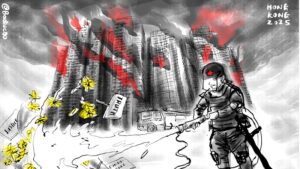
Australia’s central bank is poised to evaluate crucial labour force data that could influence the direction of interest rates. The Australian Bureau of Statistics is scheduled to release its job figures for September on October 5, 2023. Economists anticipate the unemployment rate will remain stable at 4.2 percent, the same level reported in August despite a decrease of 5,000 jobs during that month.
CommSec’s chief economist, Ryan Felsman, indicated that a steady unemployment rate is likely. However, any significant increase could alter expectations for a potential interest rate cut when the Reserve Bank of Australia (RBA) meets in early November. Felsman projects an increase in employment of 30,000 jobs and a slight rise in the participation rate to 66.9 percent. He noted, “A material lift in the labour market remains the key near-term risk to further easing.”
The RBA’s decision to maintain the official cash rate at 3.6 percent was influenced by the labour force figures discussed in its September meeting. The bank’s board highlighted that while labour market conditions are tight, there is some uncertainty surrounding future forecasts. According to the minutes from the meeting, the underemployment rate has declined, although other indicators of labour underutilisation remain largely stable.
The RBA’s minutes stated, “Business surveys and liaison suggested that the availability of labour has changed.” While forecasts indicated a slowdown in employment growth due to a reduction in population growth, the employment-to-population ratio and participation rate have remained close to historical highs.
As Australia prepares for the release of these significant job figures, the data will be crucial for determining the trajectory of monetary policy in the coming months. A steady or improving labour market could bolster the case for the RBA to consider easing interest rates, while any unexpected spikes in unemployment could lead to a reassessment of their current stance. Investors and economists alike will be closely watching the September numbers to gauge the economic landscape ahead.







